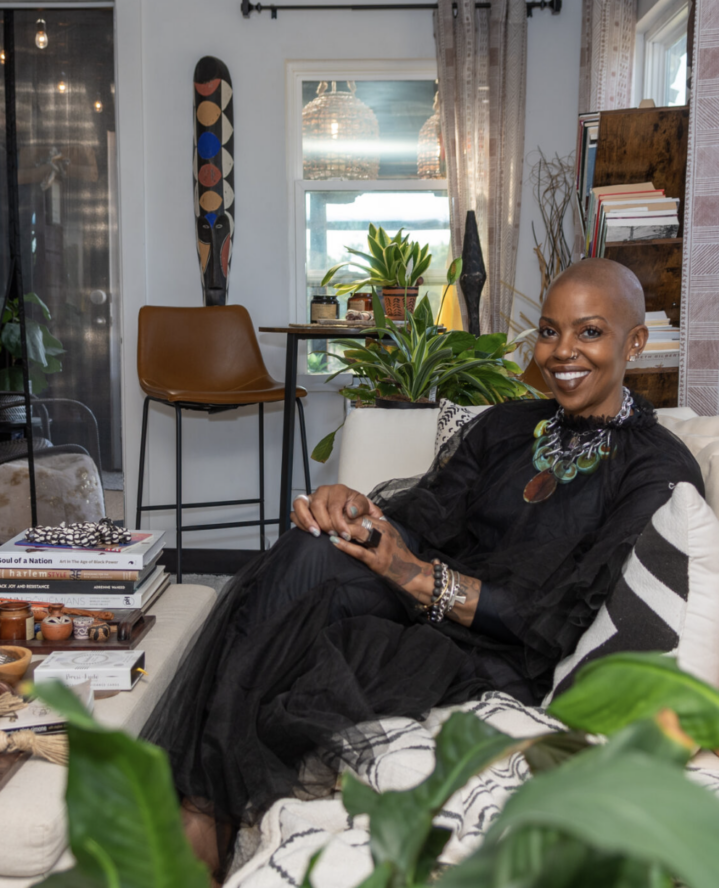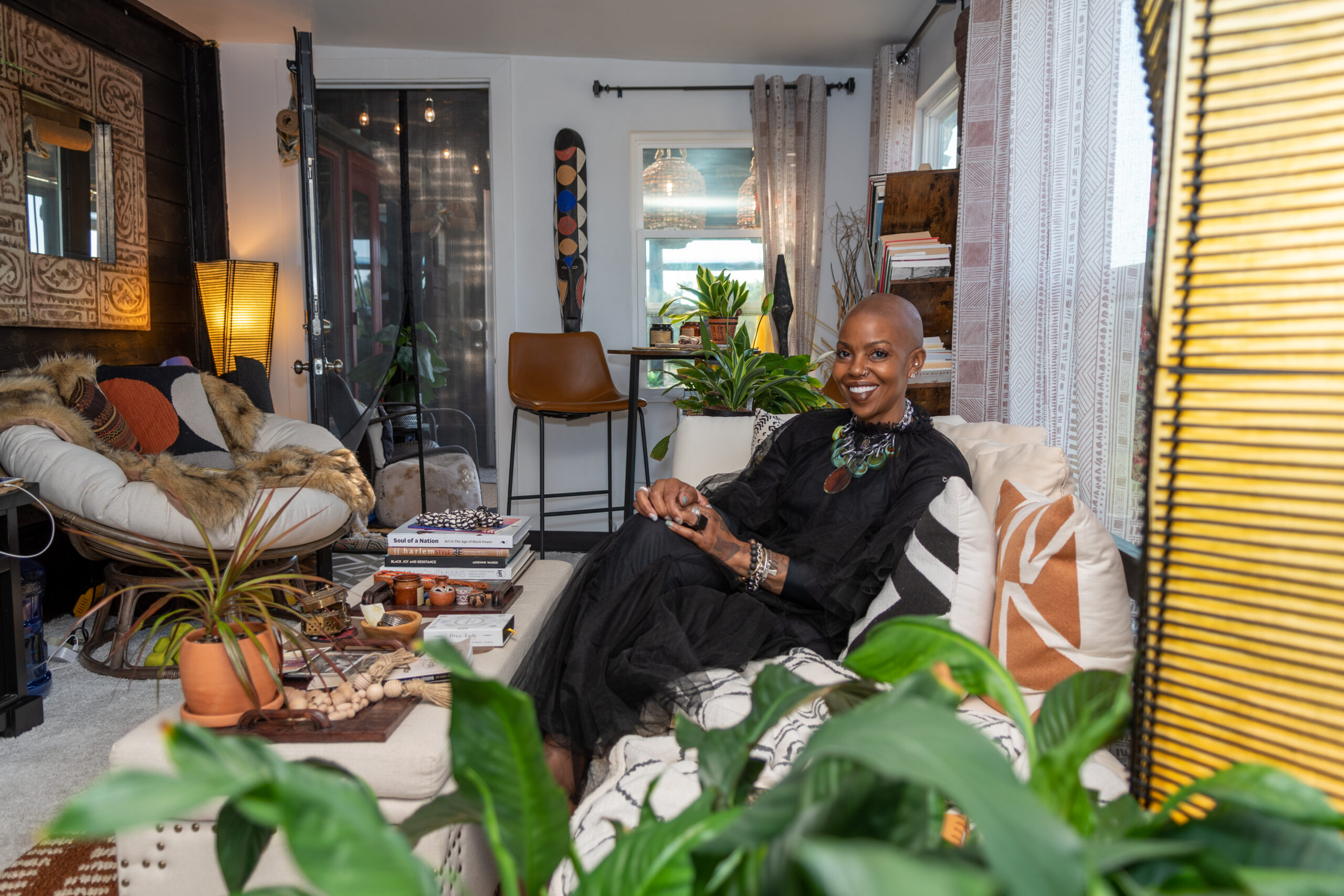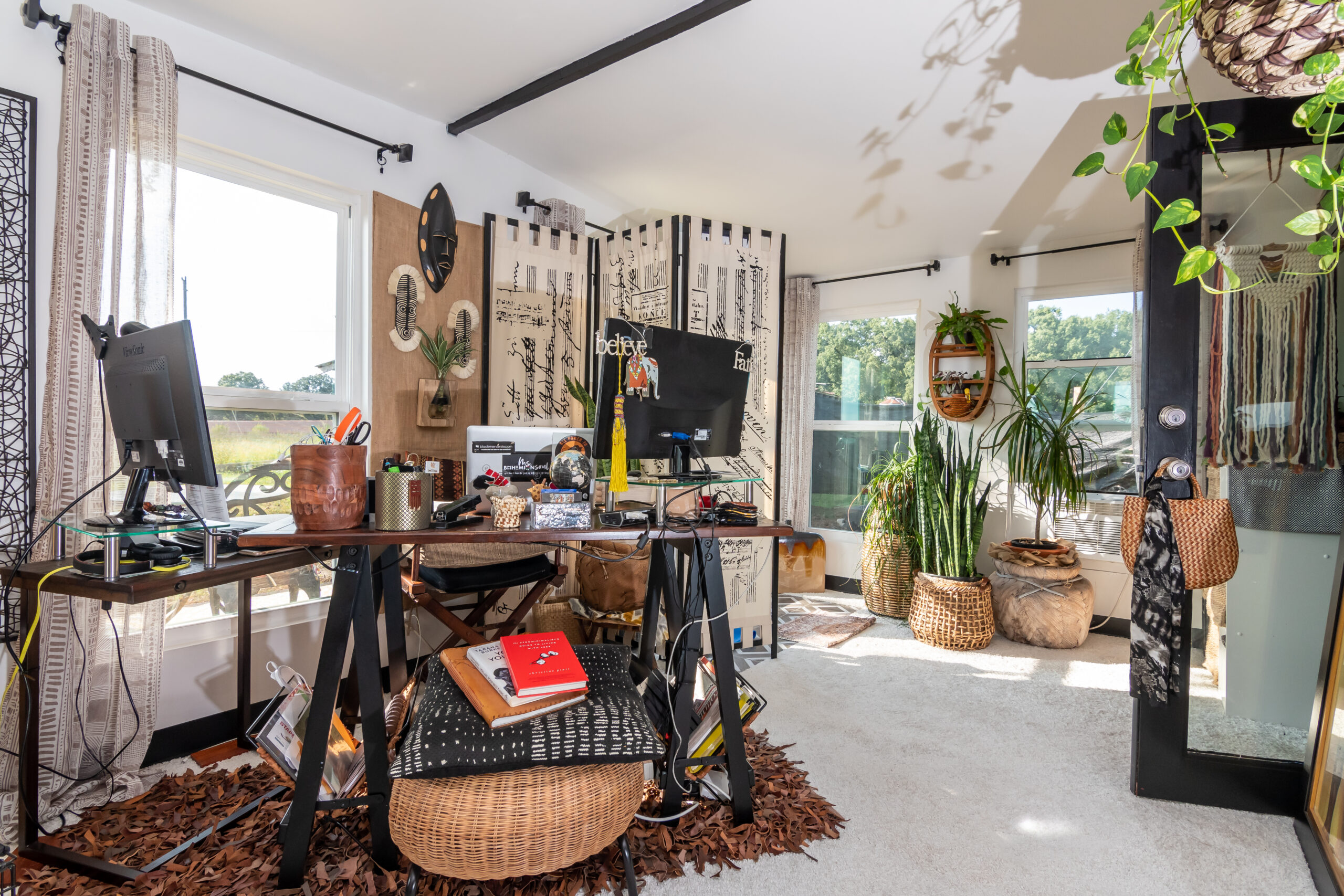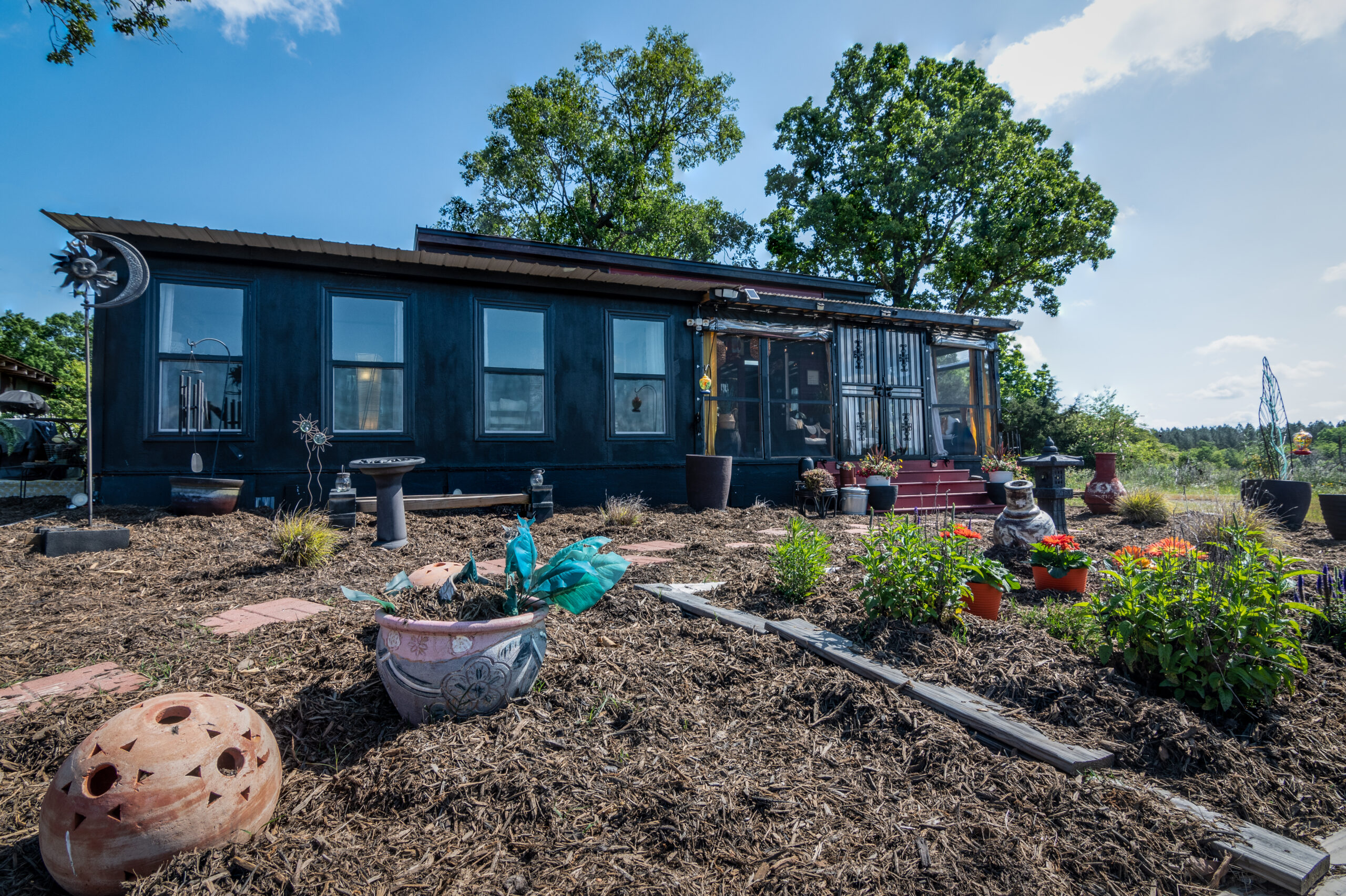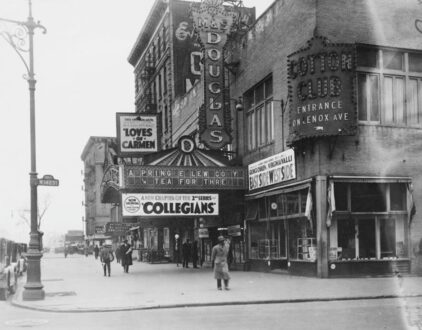Living in a tiny home is something that many of us can only imagine. For some, it might be a distant dream — not entirely practical for you and your current lifestyle, but not entirely out of the question either. For others, it might be a matter of finally taking the plunge and making your tiny house dreams a reality. Either way, it’s likely you’ve wondered what it’s really like to live in such a compact space. How do you navigate the constraints of square footage without feeling confined? What sacrifices are made, and what unexpected freedoms are discovered? Is the trade-off of material possessions for a simpler life worth it?
For Jewel Pearson, a tiny house dweller, designer, consultant, and advocate, tiny house living is not only a way of life, but a passion and a commitment to redefining the notion of home. In this exclusive interview with Home & Texture, Pearson’s expertise on the realities and joys of compact living might just inspire you to reconsider your own relationship with space, possessions, and priorities. As she sheds light on the nuances of navigating tiny spaces and embracing a lifestyle defined by simplicity and intentionality, this firsthand understanding of tiny home living can bring you one step closer to deciding whether it’s truly right for you.
Home & Texture: What inspired you to choose tiny home living, and what was it like transitioning from a traditional home to a tiny one?
Jewel Pearson: Living “free-er” is something that I’ve known I wanted to do since my daughter was going to kindergarten in the early 90s. As a young single mom at that time and so very often experiencing hardship and struggle, I was dreaming of an easier life, a “lighter” life where I could be “irresponsible” once my daughter was older and headed off into her own since I had to be so responsible as a young single mom.
My transition was fairly easy, as I had the luxury of transitioning over 10 years. I started downsizing in 2005 from the 4 bedroom, 3 bath home we’d lived in eventually to a 1 bed, 1 bath apartment that I lived in just before I built my tiny house in 2015.
H&T: Can you tell us about any creative design ideas you’ve implemented to maximize space?
JP: My most creative idea to maximize space was probably incorporating all of my windows which open the space up and make it feel larger. I didn’t incorporate a lot of “transformative” type furniture because I was focused on long-term sustainability and knew that constantly reconfiguring the space or furniture would get old quickly. I did however incorporate a LoveSac sectional instead of a traditional couch because of its configurable and modular style which worked better for my space.
H&T: What are the biggest challenges you’ve faced while living in a tiny home, and how have you solved them?
JP: The most challenging thing for tiny house on wheels dwellers is where you can put your home — the actual placement of it — since many cities and counties currently aren’t receptive to them.
With that, some of the most “accepting” areas currently outside of tiny house communities are RV parks and rural areas, which aren’t always safe spaces for Black and brown people due to racism. I’ve encountered issues with racism, first in an RV park, and then later on a rural farm that required me to relocate my home twice.
Knowing the issues with placement and safe placement means that I’ve had to be very resourceful in looking for new parking locations. I always say to folks inquiring about where they can be placed that locations are not impossible to find, they just require effort and creativity. Because I want to assist others secure safe locations, I am finalizing the creation of an online application, Cooperative Communities, to help others navigate this challenge and be able to connect with other like-minded individuals to create community.
H&T: Many people worry about storage in tiny homes. With limited space, how do you make the most of every square inch without feeling cluttered or cramped?
JP: Downsizing properly initially is the first and main thing (versus trying to make the small space accommodate too many unnecessary things, which is a common mistake that many make when going into tiny house living).
Knowing that, downsizing is a key discussion topic in the tiny house workshops I offer to help others interested in the movement and considering tiny living. I purposely designed the plans for my home to include a walk-in closet, cabinetry and shelving in my bathroom, and ample cabinetry and pantry space in the kitchen to offset having storage issues later.
I am not a minimalist, but I obviously have to pay attention to my shopping and consumption and am often donating, gifting, or selling items to offset new purchases — bringing something in and taking something out. Keeping my space organized, neat, and clean is also important, and I encourage people to pay attention to those habits in their large spaces and as they consider downsizing because those habits become even more important and more pronounced in a smaller space.
H&T: What are the unexpected benefits you’ve discovered from living in a tiny home?
JP: The unexpected benefits have been the community I have been able to create, the media exposure, and the connections that I’ve made as a result of sharing my journey and the ways I’ve been able to help others achieve this lifestyle for themselves.
Additionally, I have become a better steward of the earth. I think more about my footprint and am more aware of the impact of my actions on the earth and how I move about the world. Some of the expected benefits that I had going into the lifestyle almost 10 years ago have been that downsizing has allowed me to better focus on what’s important — the priorities of life. My expenses are less, I move differently and I can travel more. Unexpectedly though, I now travel lighter. I am no longer the big suitcase traveler but can travel for extended periods with a backpack.
H&T: How do you handle entertaining guests or hosting gatherings in such a small space?
JP: My previous homes were often the gathering spot for friends and family, so that was something important that I accounted for in my design. I never wanted guests to feel uncomfortable in my tiny house or feel as if they couldn’t visit as they were accustomed to. I can’t host “traditional dinners” at a dining room table, but I have several open spaces within my original tiny house, like my added-on sunroom space and my screened-in porch with seating to accommodate entertaining guests and for meals. Gatherings are less about a traditional dinner table and more about sharing space and enjoying time and conversation with each other.
H&T: What advice would you give to someone considering transitioning to tiny home living?
JP: To pay attention to how they use their larger spaces to better understand what they’ll need from a small space to make it feel like and be home. Identifying that and incorporating those needs in my tiny house design are what have allowed me to successfully live this lifestyle for almost 10 years now. I also encourage folks to consult with someone who has the expertise and has successfully navigated the journey versus navigating the often daunting transition alone.
This article has been edited and condensed for length and clarity.
popular posts
- 1It’s Black Business Month, So Let’s Go Shopping and #BuyBlack!
- 2Cortisol Cocktail: A Yummy Drink With All The Health Benefits
- 320 Deliciously Simple Tequila Drinks With Only Two Ingredients
- 4These Home Decor Items Will Instantly Make Your Space Look Outdated
- 5A Look Inside Elon Musk's Tiny $50,000 House
homeownership
Home is a safe place where relationships flourish and the cornerstone of neighborhoods. We believe it’s the setting that surrounds your phenomenal story.
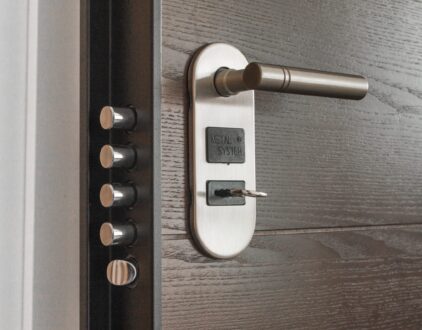
Up to 30% Off: Top of the Line Home Security Systems
by Arielle Clay | January 19, 2023
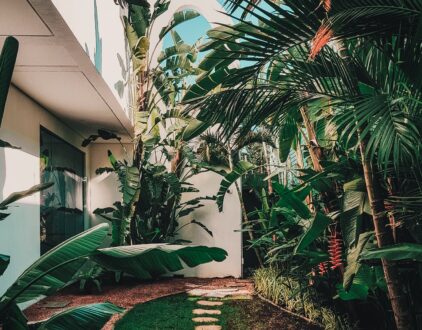
Front Yard Curb Appeal Tips for the Spring Season
by Melody Brown | January 19, 2023
FOLLOW ALONG ON INSTAGRAM
#homeandtexture
Find us on social for more home inspiration where culture, personal style, and sophisticated shopping intersect to help you create a home where you love to live.
